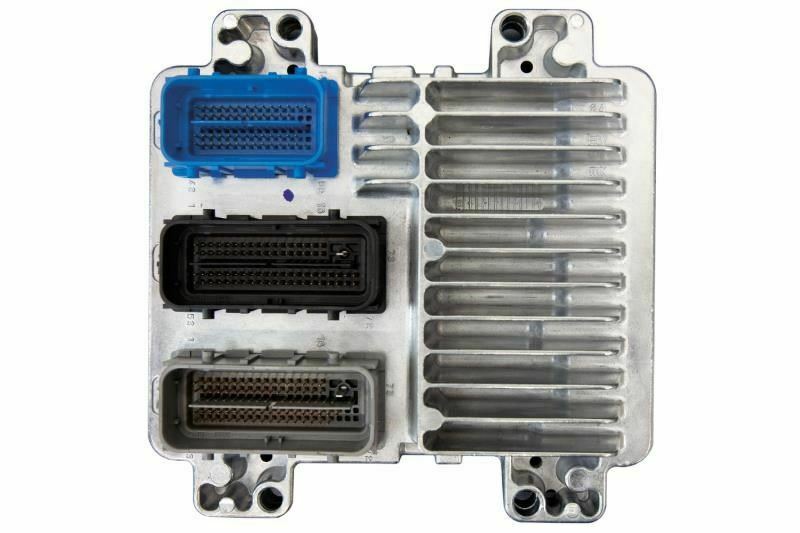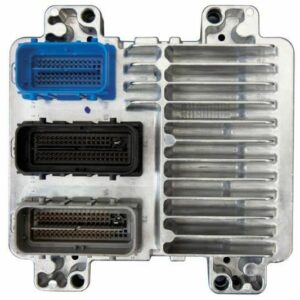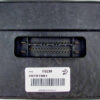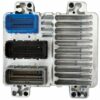Restore Your Vehicle’s Brain and Get Back on the Road
Is your 2009 Cadillac XLR, or another compatible GM vehicle, suffering from frustrating issues like a persistent check engine light, stalling, rough idling, or a complete no-start condition? These are classic signs of a failing Engine Control Module (ECM), the central computer responsible for managing engine performance, fuel delivery, and emissions. In my 20+ years as a technician, I’ve seen how a faulty ECM can turn a reliable vehicle into a source of constant headaches. This isn’t just a part; it’s the command center for your engine, and when it fails, nothing works right.
This listing is for a direct-replacement Engine Control Module, part number 12625453, that arrives at your door ready to install. The biggest hurdle with ECM replacement is typically the need for expensive, dealer-only programming. We eliminate that problem entirely. Simply provide us with your vehicle’s VIN (Vehicle Identification Number) during checkout, and our experts will program the module with the very latest GM software updates specific to your car. This ensures perfect communication between the new ECM and all other vehicle systems, restoring original performance and reliability.
Case Study: A Tricky Diagnosis
A few months back, a 2009 Cadillac STS with the 4.6L V8 came into my bay. The owner was frustrated; he’d been to two other shops for an intermittent stalling problem that never threw a consistent trouble code. Sometimes it would run perfectly for days, then suddenly die at a stoplight. We checked fuel pressure, sensors, and wiring harnesses—all tested fine. It wasn’t until we hooked up a scope and monitored the ECM’s 5-volt reference signal on a long test drive that we caught the culprit. The signal would momentarily drop out, just for a split second, causing the engine to cut out. This internal ECM failure is something a standard code reader would never catch. Installing a VIN-programmed module like this one resolved the issue permanently, saving the customer from replacing perfectly good sensors.
Diagnosing a Faulty ECM: Common Symptoms
A failing ECM can manifest in numerous ways, from subtle performance dips to critical failures. If you’re experiencing any of the following, your ECM is a likely suspect. Over the years, I’ve found these to be the most common indicators, often accompanied by Diagnostic Trouble Codes (DTCs) like P0601, P0606, or U0100 communication errors.
- ✔ Check Engine Light is on or flashes intermittently
- ✔ Engine cranks but refuses to start
- ✔ Unexplained drop in fuel economy
- ✔ Rough or unstable idle
- ✔ Engine stalling or hesitating during acceleration
- ✔ Transmission shifting issues or getting stuck in gear
- ✔ Communication errors with diagnostic scan tools
A Straightforward Guide to Installation
Replacing your ECM is a manageable job for a DIY enthusiast. With our pre-programmed module, you skip the most complicated step. Always consult a service manual for your specific vehicle, but here is a general guide:
- Safety First: Disconnect the negative terminal from your vehicle’s battery to prevent any electrical shorts.
- Locate the ECM: On the 2009 XLR, it’s in the right-hand front of the engine compartment. For other models, its location can vary (e.g., firewall, behind the glove box, or near the air cleaner box). Check your fitment details.
- Disconnect Connectors: Carefully unclip the wiring harness connectors from the old ECM. They often have locking tabs that need to be released gently. Do not force them.
- Remove the Old Module: Unbolt the old ECM from its mounting bracket. Keep the hardware as you will reuse it.
- Install the New ECM: Mount your new, pre-programmed ECM in place and secure it with the original hardware.
- Reconnect Everything: Firmly plug the wiring harnesses back into the new module until they click into place. Reconnect the negative battery terminal.
- Final Steps: Some vehicles may require a security or crankshaft position sensor relearn procedure after installation, which can often be done without special tools. Turn the key to the ‘ON’ position for 10-15 minutes before starting to allow the systems to sync.
Verified Vehicle Compatibility
This module, service number 12625453, is a direct replacement for a wide range of GM vehicles and is interchangeable with part numbers 12636659, 12639300, 1263605, 12628993, 12628911, 12622175, 12630464, and 12678512. Please verify your vehicle is on the list below for guaranteed compatibility.
- Cadillac CTS (2009): 6.2L, (RH front engine compartment)
- Cadillac DTS (2009-2011): Electronic Control Module
- Cadillac SRX (2009): 4.6L, (LH engine compartment)
- Cadillac STS (2009): 4.4L or 4.6L, (LH frame rail)
- Cadillac STS (2010): 4.6L, (LH frame rail)
- Cadillac XLR (2009): (RH front engine compartment), ID 12625453 or 12636659
- Chevrolet Colorado (2009): (RH firewall)
- Chevrolet Colorado (2010-2012): 2.9L or 3.7L, (RH firewall)
- Chevrolet Corvette (2009): ZR1, (RH engine compartment)
- Chevrolet Trailblazer (2009): 6.0L, (LH engine)
- GMC Canyon (2009): (RH firewall)
- GMC Canyon (2010-2012): 2.9L or 3.7L, (RH firewall)
- GMC Envoy (2009): 5.3L, (LH engine)
- Hummer H3 (2009-2010): (RH firewall), 3.7L for 2010 models
- Buick Lucerne (2009-2011): 4.6L, (lower part of air cleaner box)
- Saab 9-7X (2009): (LH engine)
Do I need to do any programming myself?
Do I need to do any programming myself?
No. We handle all the programming for you before shipment. Just provide your vehicle’s 17-digit VIN when you order, and the module will arrive ready for installation with the latest GM software.
Is this part compatible with other service numbers?
Yes, this ECM is a direct replacement for several service numbers, including 12636659, 12639300, 12628993, and others listed in the description. It’s designed to be a comprehensive solution for many GM vehicles from this era.
What is a VIN and where do I find it?
The VIN is your car’s unique 17-digit serial number. You can typically find it on a sticker on the driver’s side doorjamb, on a plate on the dashboard visible through the windshield, or on your vehicle’s registration and insurance documents.
Will this fix my check engine light?
If the check engine light is caused by an internal failure of the ECM (common codes include P0601-P0606), then yes, this part will resolve the issue. However, it’s crucial to properly diagnose the vehicle first, as the light can be triggered by many other components like sensors or wiring.
What if I forget to provide my VIN?
Providing your VIN is essential for programming. If you forget to add it to your order, our customer service team will contact you via email to retrieve it. Please note that we cannot ship the module until we have your VIN to ensure it is correctly programmed for your vehicle.



